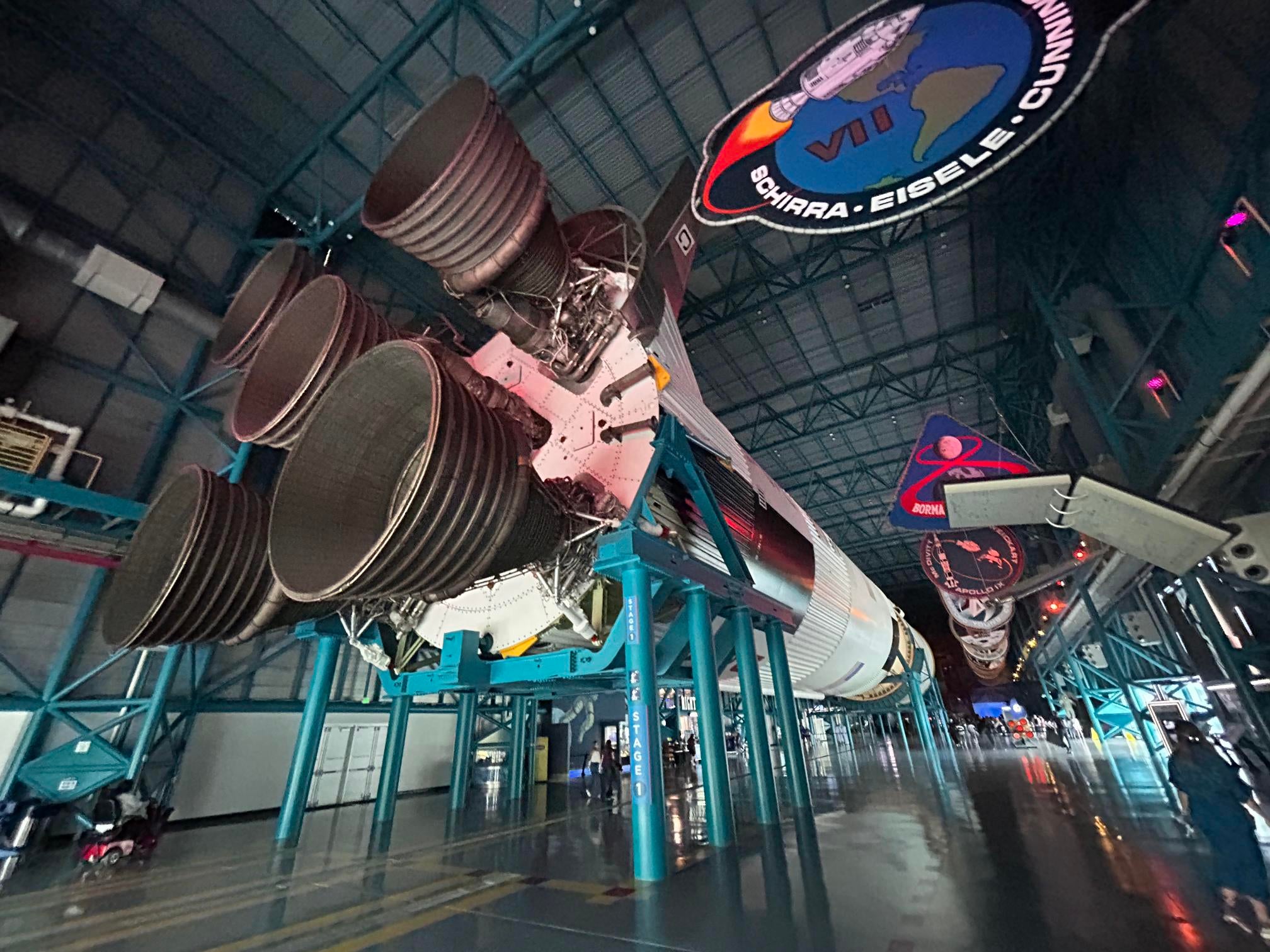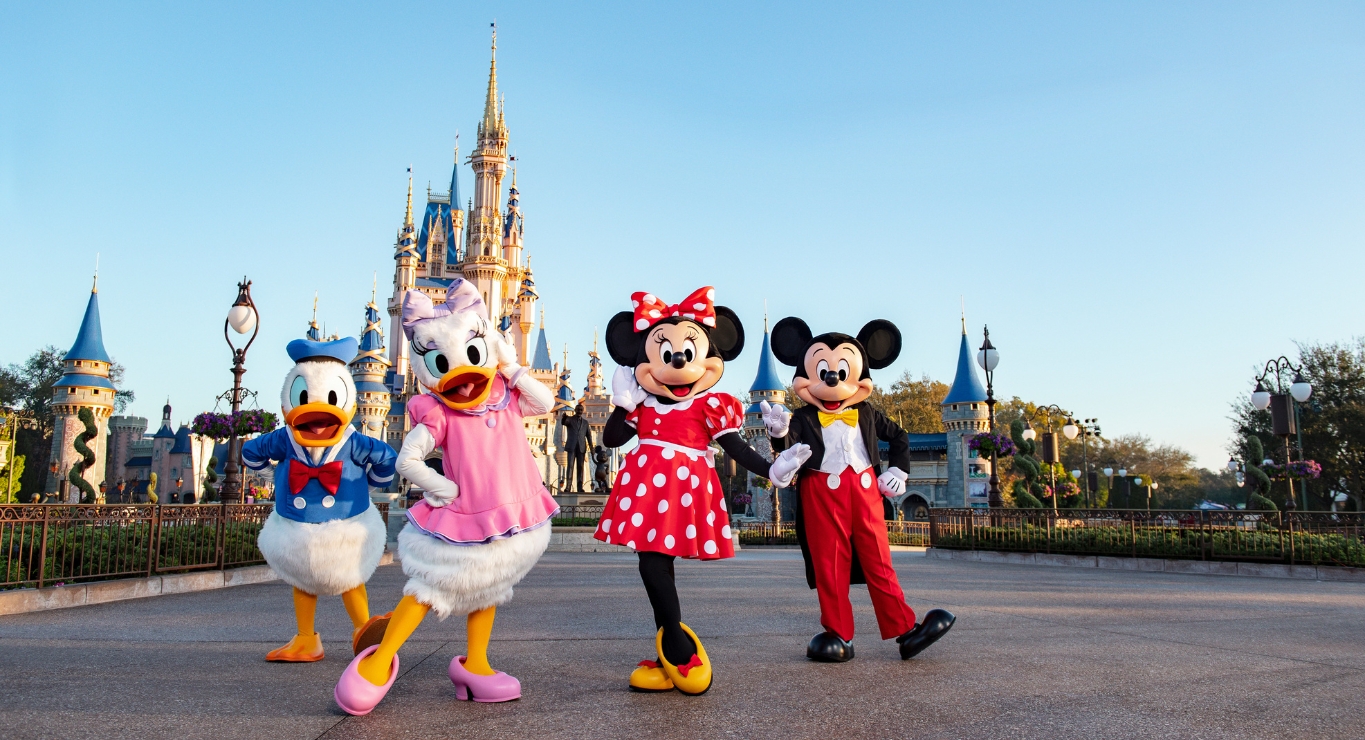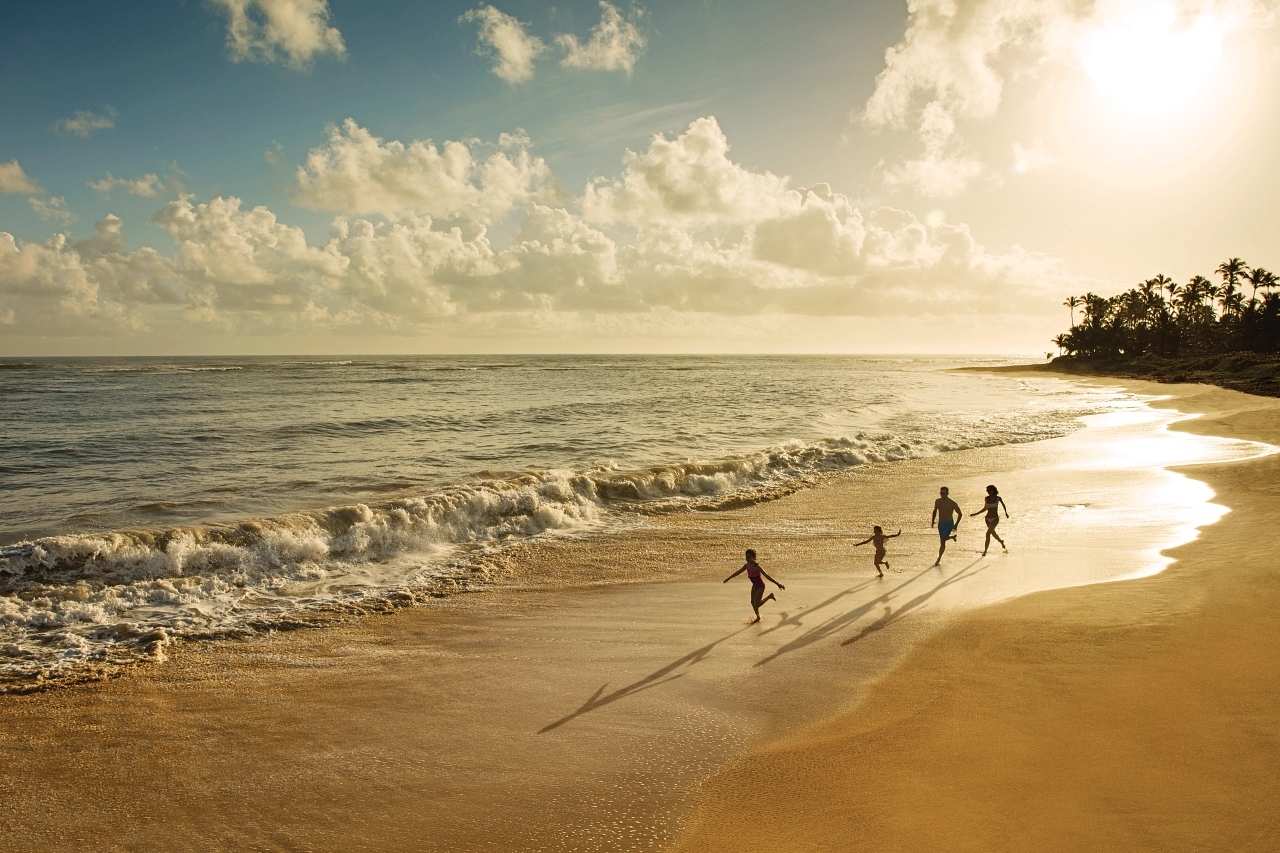Our CRM Executive for American Holidays, Henry Stitt, shares how his dreams came true at Kennedy Space Center in Florida. 3,2,1…we have lift–off!
I couldn’t quite believe the news when I was invited to Kennedy Space Center back in November 2023. As a lifelong space exploration enthusiast, I was thrilled to learn I would be spending three full days in the complex learning about the past, present and future of space travel. In this blog, I’ll be detailing my experiences, highlighting the different attractions of the visitor complex and why it is a must-visit destination on anyone looking for the best the Sunshine State has to offer.

Located on Merrit Island, less than an hour’s drive from downtown Orlando, construction began on the historic Kennedy Space Center spaceport in 1962 to accommodate launches of the enormous Saturn V rocket. Since the end of Apollo, Kennedy Space Center has launched hundreds of missions, including the iconic, and now retired, Space Shuttles, along with various satellite launches and more recently, new, privately developed commercial rockets from companies such as SpaceX, United Launch Alliance, Astra and Relativity. The Kennedy Space Center Visitor Complex opened not long after in 1967 and has been the place to go for everything spaceflight related.
Day 1: America’s spaceport, moon rockets and space shopping
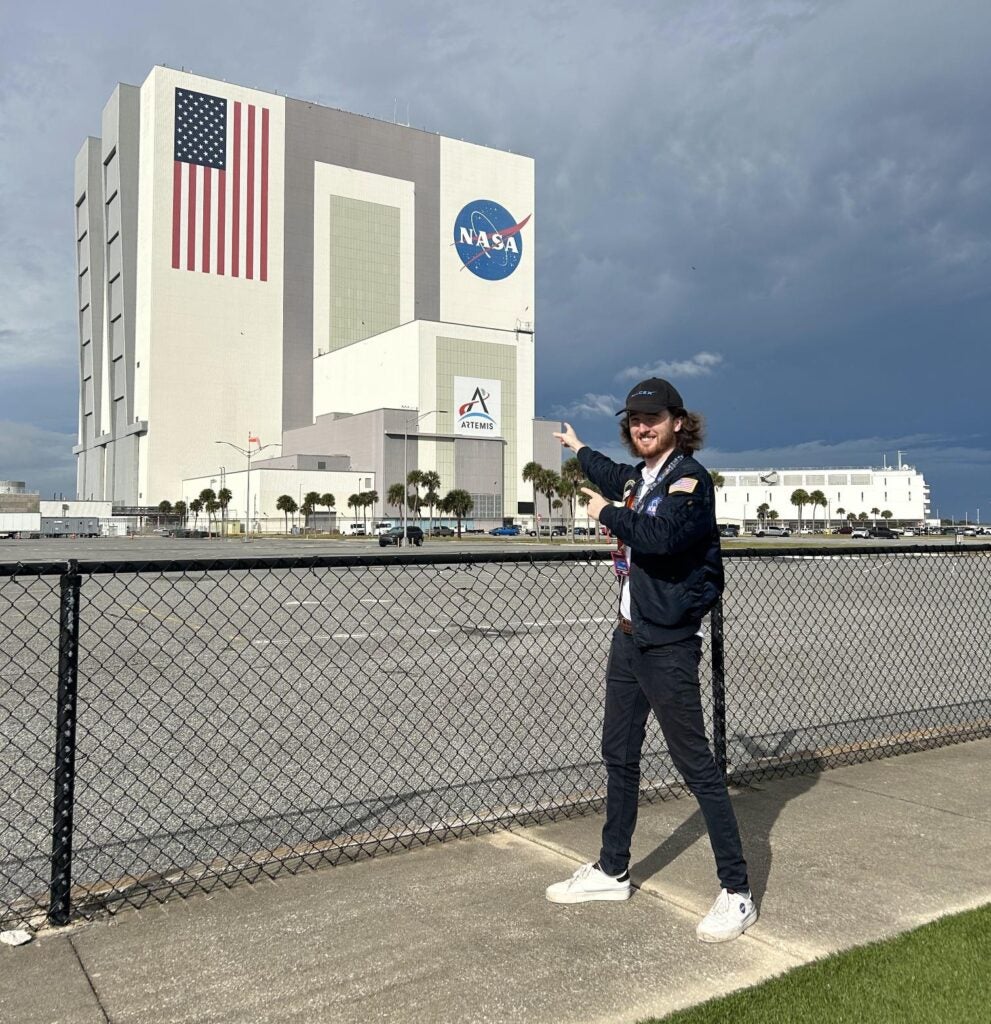
We were fortunate enough to be given pre-launch access (pun intended) to one of the latest attractions; the Hyperdeck VR. We soon found ourselves immersed in the virtual game world of four players, boarding a rocket to the Moon and preparing for lift-off. This is perfect for families and groups of friends alike, and it was an absolute blast! It lasts around seven minutes, and although it is included in the admission ticket, pre-booking is required.
After our virtual reality experience, we boarded the Explore Tour bus to visit the Saturn V Center, stopping to see various launch pads and the huge Vehicle Assembly Building (VAB) along the way. This was really a dream come true for me, as I’ve read about and seen countless videos of these iconic locations. The Explore Tour is an upgraded add-on to the admission ticket, whereas the bus tour straight to the Apollo/Saturn V Center is included in regular admission.
I cannot recommend the Explore Tour enough though, as it allows you to get really close to active launch Pads 39a and 39b, as well as NASA’s huge Vehicle Assembly Building. These launch sites also hold historical significance, with every Saturn V and Space Shuttle mission launching here. These days, Pad 39a is used for SpaceX’s reusable Falcon 9 and Falcon Heavy rockets launching crew, cargo and satellites, and Pad 39b is used for NASA’s latest Moon rocket, the SLS – which will take a four-person crew back to the Moon in 2025 on the Artemis II mission.
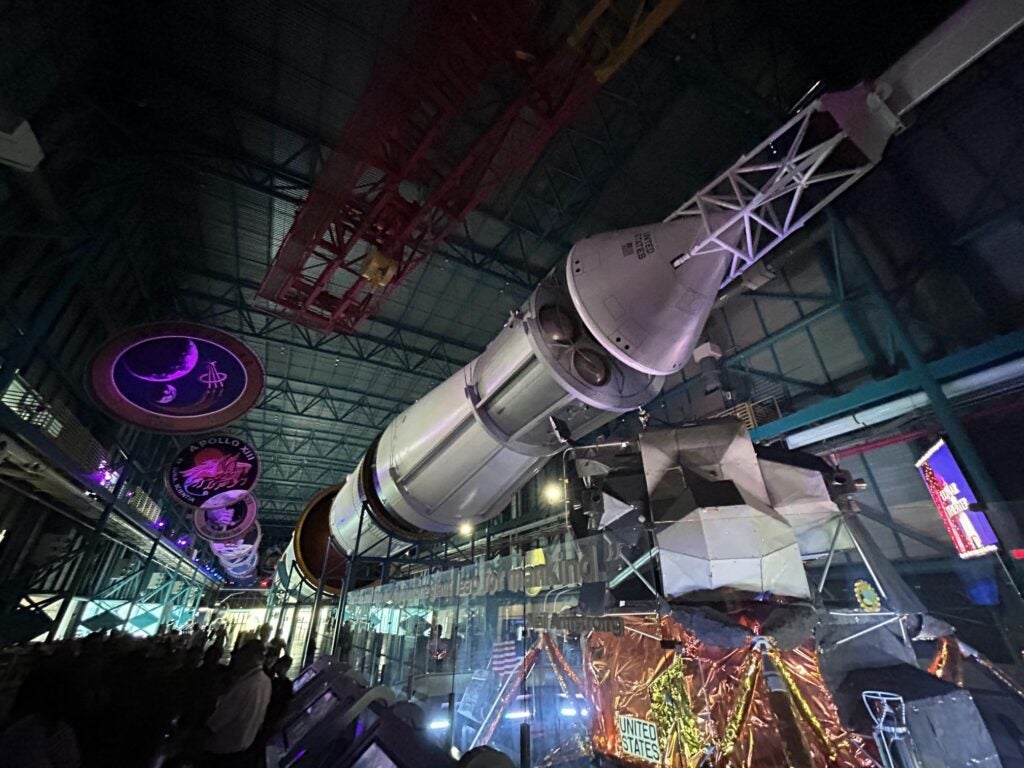
The Saturn V Center is home to lots of exhibits, but the star of the show here, without question, is a real example of a Saturn V moon rocket. This rocket stood 111 metres tall and was designed with one purpose in mind: to ferry astronauts to the Moon for the Apollo program. Until recently, it held an incredible 50-year record of being the heaviest flying object ever built by humans and the largest rocket ever launched.
Laid on her side, this colossal rocket has been broken up into the separate stages, meaning all the intricate engine nozzles, plumbing and fuel tanks are on full display from underneath – a fascinating and inspiring experience for everyone. Before taking the bus back to the visitor complex, we relaxed in the Moon Tree Garden, a thoughtful exhibit of now second-generation trees that are direct descendants of seeds that were taken to the Moon, alongside a bronze statue of Apollo 11 crew Neil Armstrong, Buzz Aldrin and Michael Collins.
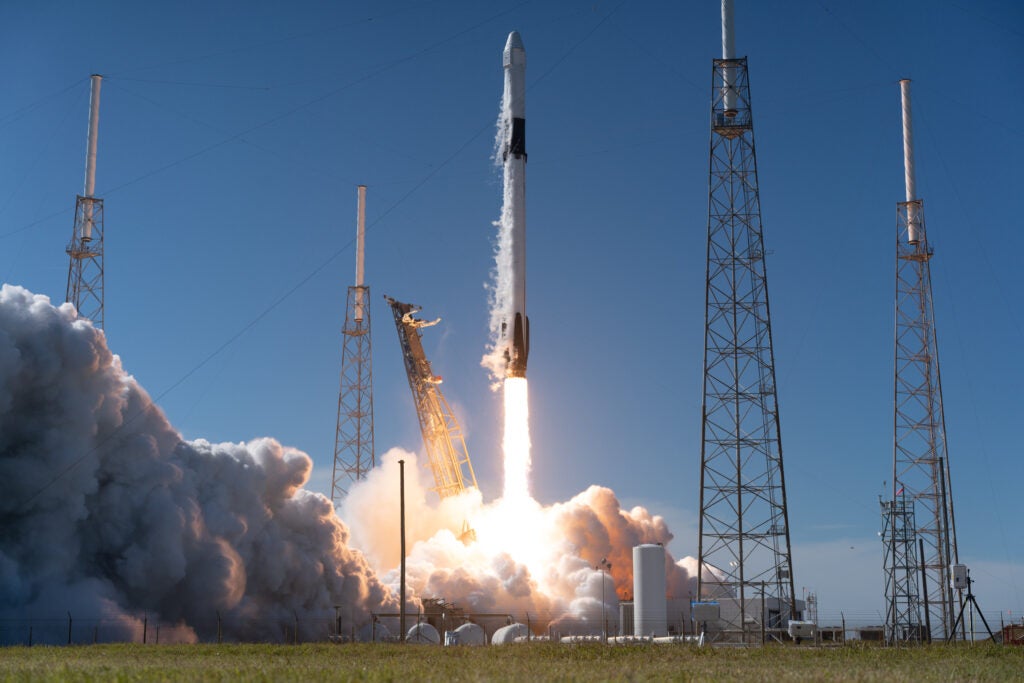
We spent some time in the world’s largest space shop, full of NASA memorabilia and other space merchandise – and now I’m a proud owner of a lovely intricate 1/200 wooden scale model of the Space Shuttle Atlantis, alongside buying various gifts for back home; although I admit I had trouble fitting this all in my suitcase! Later that evening, on our cosmos-themed hotel’s rooftop ‘space bar,’ I was fortunate to experience a rocket launch in person. The mission was designated ‘Starlink Group 6-28’, and at five minutes past midnight a Falcon 9 rocket, serial number B1069, launched for the eleventh time carrying 23 Starlink internet connectivity satellites to orbit.
Whilst visibility was poor due to fog, the sound, feeling the vibrations and a rapid change of night to day from the engine’s brilliant flames created a core memory for me. Less than 10 minutes later the rocket booster performed a controlled re-entry and propulsive landing at sea on the drone-ship barge ‘Just Read the Instructions’. This fast-paced launch schedule and reusability of launch facilities is an incredible engineering and logistical accomplishment, impossible only 10 years ago, and gives visitors to Kennedy Space Center a particularly good chance of watching a launch in person. There’s typically a launch from the spaceport every three to four days, and this will only get busier as more companies are introducing competitor rockets to the workhorse Falcon 9.
Day 2: Astronaut training, astronaut chatting and Space Shuttle Atlantis
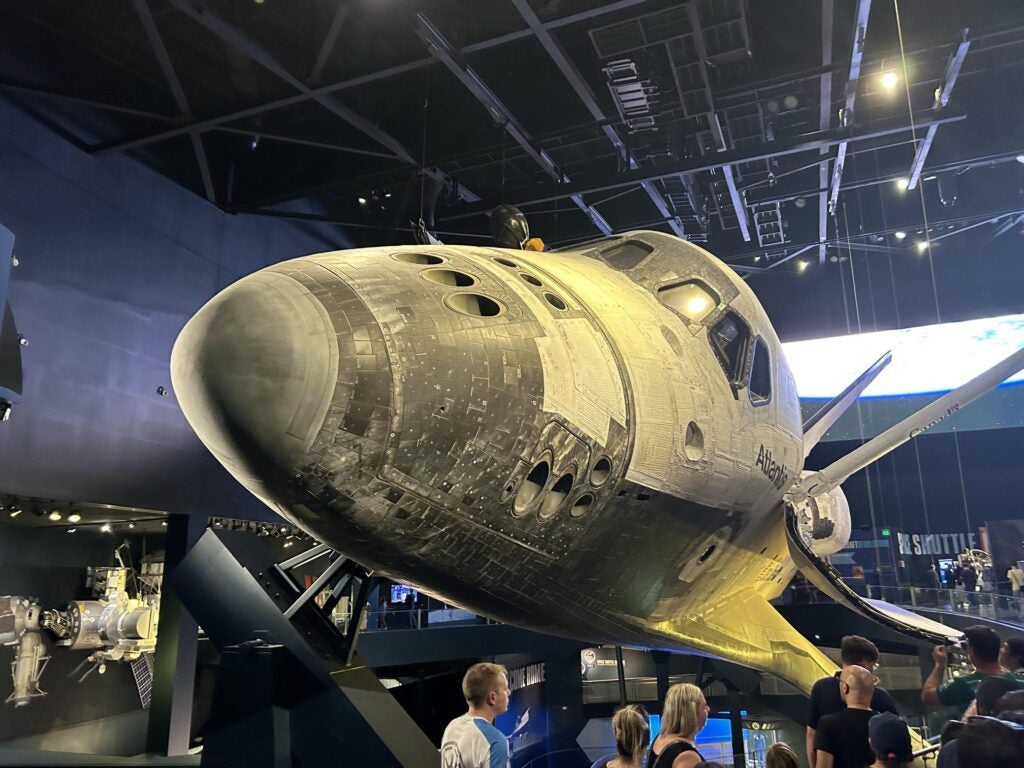
On an early Saturday morning, we arrived at Kennedy Space Center and spent half the day on the exciting Full Astronaut Training Experience program. It can be booked without entrance tickets for the day, but if visitors want to access this in the afternoon, they must have an admission ticket. This was a blast; after learning about the rigours of living and working on board the International Space Station and the future of space habitation, we put our new knowledge to the test with several simulation experiences.
From walking on Mars conducting science in VR, to piloting a spacecraft through entry into Mars’ atmosphere (in a 360° full motion simulator – have a light breakfast for this one), there’s something for everyone here. My favourite was the full mission simulation – with members of our group assigned roles such as flight controllers in ‘Houston’, press officers commentating our virtual launch and payload specialists in the back seats of the spacecraft conducting science. I found myself up in the front as mission commander, going through the checklists that a real spacecraft commander would have to do through the distinct phases of a space flight.
From our astronaut training experience, it was only appropriate that our next activity was meeting one! We had the chance to listen to and meet retired NASA astronaut Woody Spring, veteran of the Space Shuttle Atlantis’ 1985 mission STS-61-B. Alongside some delicious nachos with cheese sauce and salsa, the experience was pretty amazing in that any audience member, children and adults alike, could ask anything they could think of, and Spring would give a witty but communicative answer.
I asked him a pretty specific question – ‘how did the feeling of launch change once the solid rocket boosters separated’ – and Spring gave me a detailed recollection of the entire experience. Later that day we would ride on the Shuttle Launch Experience in the Atlantis exhibition, and I would get a taste of the real thing for myself. This casual laid back event happens twice a day, at 10:00am and 2:00pm, and must be prebooked as an additional extra to admission.
After meeting Mr. Spring, we went to see the spacecraft that took him to orbit, Space Shuttle Atlantis. This experience was simply incredible – I won’t spoil the details of how they reveal the enormous spaceplane because I simply believe that it’s worth experiencing in person. The showmanship involved is absolutely spectacular and magical and is far from the static museum exhibition that one might expect. After taking in the scale of this spacecraft, which flew to orbit thirty-three times, see a replica of the Hubble Space Telescope (the real one is orbiting the Earth at an altitude of 525km) and definitely check out the Shuttle Launch Experience. This immersive ride puts you in a passenger seat on the Shuttle in a hypothetical passenger cabin, and simulates all the sounds, vibrations and g-forces present on a Shuttle launch.
Kennedy Space Center Visitor Complex offers so much to do. We paid a visit to Planet Play, a space-themed indoor play area perfect for kids, before visiting the Journey to Mars exhibit, full of full-scale replicas of Mars spacecraft such as the famous Curiosity and Perseverance rovers and numerous interactive games and simulators.
Day 3: The past, present and future of space exploration
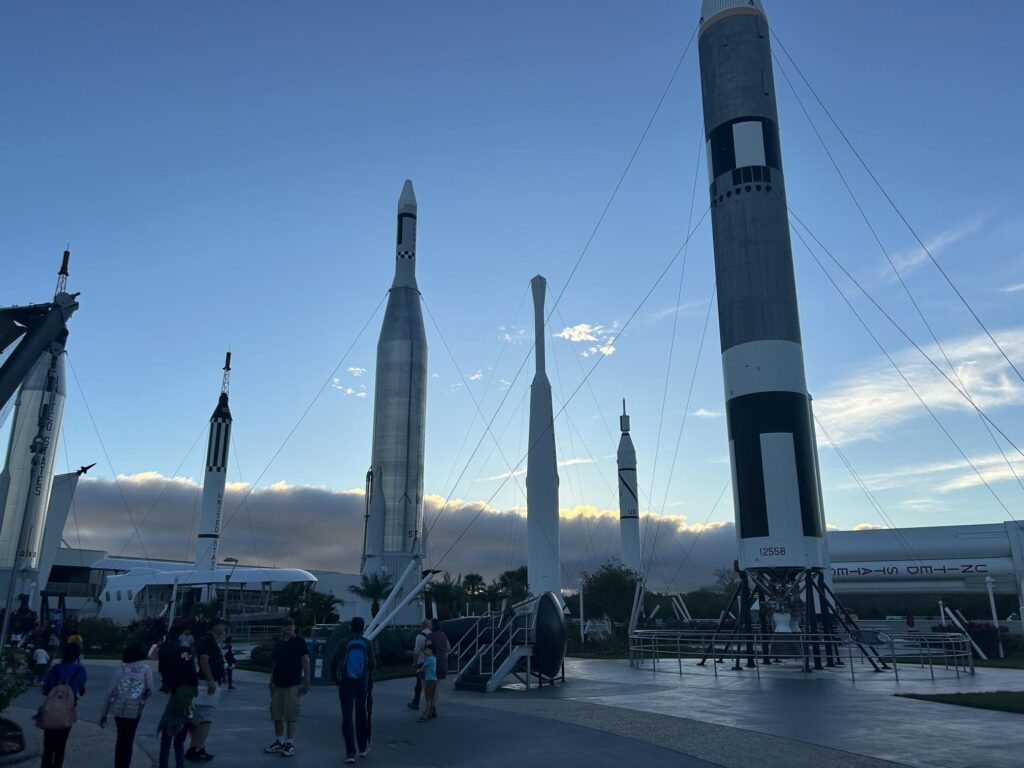 On our final day at the Visitor Complex, we visited the ‘Gateway’ exhibition, which aims to showcase and educate visitors on the latest rockets and spacecraft. Get up close to a flown SpaceX Dragon spacecraft, which was the first privately developed spacecraft to deliver and return cargo to the ISS. Also displayed by SpaceX is a Falcon 9 first-stage booster, suspended from the ceiling. The scale of this machine really put into perspective all the videos of these crafts launching and landing. The particular example displayed is serial number B1023, which launched a Thai communications satellite in 2016 and later served as a side-booster for the Falcon Heavy test flight in 2018, which famously put Elon Musk’s personal Tesla roadster into orbit around the Sun.
On our final day at the Visitor Complex, we visited the ‘Gateway’ exhibition, which aims to showcase and educate visitors on the latest rockets and spacecraft. Get up close to a flown SpaceX Dragon spacecraft, which was the first privately developed spacecraft to deliver and return cargo to the ISS. Also displayed by SpaceX is a Falcon 9 first-stage booster, suspended from the ceiling. The scale of this machine really put into perspective all the videos of these crafts launching and landing. The particular example displayed is serial number B1023, which launched a Thai communications satellite in 2016 and later served as a side-booster for the Falcon Heavy test flight in 2018, which famously put Elon Musk’s personal Tesla roadster into orbit around the Sun.
NASA’s Orion spacecraft is in the centre of the exhibit, flown to orbit on the 2014 mission ‘EFT-1’ (Exploration Flight Test 1) – this spacecraft type will serve as the backbone for NASA’s return to the Moon later this decade. There are countless other exhibits here, from a spaceplane prototype to real astronaut spacesuits, to a training example of Boeing’s own crew capsule, Starliner. The variety of spacecraft on display is truly inspiring and really sets the scene for our future in space, with more spacecraft being designed to be reusable, ultimately leading to launch costs dropping every year.
Also at Gateway are four new immersive rides, where you are launched into deep space through nebula, visiting alien planets in a 4D-style experience with educational commentary along the way. I found this to be as informative as it was exhilarating, as the rides were packed with facts and scientific insight. After leaving Gateway, we visited ‘Heroes & Legends’ – home to the Astronaut Hall of Fame. This exhibition focuses on the early days of human spaceflight, a stark contrast to the clean lines and modern technology in Gateway. See a Redstone rocket suspended from the ceiling, and a unique close up look at the Sigma 7 and Gemini 9 spacecraft, which carried the early NASA astronauts to space in the 1960s.
Our final stop was the IMAX theatre, where we were lucky enough to watch a documentary called Deep Sky, focused on the incredible James Webb Space Telescope. This space observatory, launched into space on Christmas Day 2021, is helping us answer questions we’ve all wondered: Where did we come from? Are we alone? How did the universe begin? It was the perfect way to end a fantastic trip, and I can’t recommend Kennedy Space Center Visitor Complex enough to anyone – especially if you have even the slightest interest in the cosmos. It’s a superb attraction, you will learn a lot, be amazed and immersed in space exploration, and it’s absolutely worth your time.
Discover More with American Holidays
To follow in Henry’s footsteps and live out your own astronaut dreams on a Florida holiday, give our Personal Travel Planners a call today. At American Holidays we have over 35 years’ experience in crafting holidays to the US. Start planning yours today and discover more…


